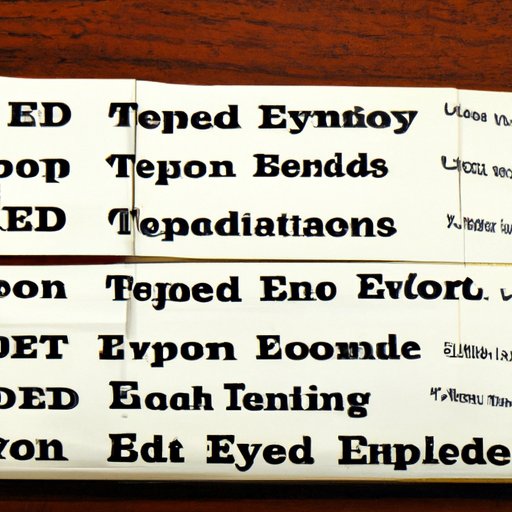Introduction
Savings bonds provide a safe and reliable way to invest your money without exposing it to the volatility of stock markets. These bonds are offered by the U.S. government and are backed by its full faith and credit. Savings bonds offer investors a guaranteed rate of return with minimal risk. It is important to understand the different types of savings bonds available and the process of how to buy them. This article will provide an overview of the benefits and risks of investing in savings bonds, as well as tips for choosing the right bond.
Definition of Savings Bonds
A savings bond is a debt security issued by the U.S. government to help finance its spending. Savings bonds are sold at face value and earn interest over time. They are considered one of the safest investments available, since they are backed by the full faith and credit of the U.S. government. The main benefit of investing in savings bonds is that they offer a guaranteed rate of return with minimal risk.

Benefits of Investing in Savings Bonds
Savings bonds are a great way to save for the future, as they provide a guaranteed rate of return with minimal risk. They are also easy to purchase and can be held for up to 30 years, making them ideal for long-term savings goals. In addition, savings bonds are exempt from state and local income taxes and can be redeemed at any time. Finally, savings bonds are transferable, so they can be given as gifts or passed on to heirs.
Types of Savings Bonds
There are two main types of savings bonds available: Series EE and I savings bonds. Series EE savings bonds are issued at face value and earn a fixed rate of interest for 30 years. Series I savings bonds are inflation-indexed bonds that are issued at face value and earn a variable interest rate based on current market conditions. Treasury Inflation-Protected Securities (TIPS) are another type of savings bond and are designed to protect against inflation.
Overview of Buying Process
Savings bonds can be purchased through the Department of the Treasury’s website or through a financial institution. When purchasing a savings bond, it is important to consider the cost of the bond, the interest rate, and the maturity date. It is also important to note that there are minimum purchase amounts and maximum purchase limits for each type of savings bond.

Risks and Rewards of Investing in Savings Bonds
The main benefit of investing in savings bonds is their low-risk profile. However, there are some risks associated with investing in savings bonds, such as inflation risk and interest rate risk. Inflation risk is the risk that the purchasing power of the bond’s principal and interest payments will decrease due to inflation. Interest rate risk is the risk that the bond’s interest rate may not keep pace with current market rates. Additionally, savings bonds cannot be sold before their maturity date, so investors must be willing to hold them until they reach maturity.
Tips for Choosing the Right Savings Bond
When choosing a savings bond, it is important to consider the interest rate, maturity date, and other factors. Investors should analyze the current interest rate environment and evaluate the potential returns of the bond. It is also important to review the maturity date of the bond to ensure that the investor is comfortable with the length of the investment. Additionally, investors should be aware of the tax implications of investing in a savings bond.
Conclusion
Savings bonds are a great way to invest your money without exposing it to the volatility of stock markets. They offer a guaranteed rate of return with minimal risk, and can be held for up to 30 years. When choosing a savings bond, it is important to consider the interest rate, maturity date, and tax implications. By understanding the benefits and risks of investing in savings bonds, you can make an informed decision when it comes to investing your money.


